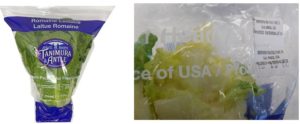As of November 9, 2020, a total of 12 people infected with the outbreak strain of E. coli O157:H7 have been reported from six states.

Illnesses started on dates ranging from September 2, 2020, to October 14, 2020. Ill people range in age from 8 to 62 years, with a median age of 21 years. Sixty-seven percent of ill people are female. Of 11 ill people with information available, 5 have been hospitalized. No deaths have been reported.
Illnesses might not yet be reported due to the time it takes between when a person becomes ill and when the illness is reported. This takes an average of 2 to 4 weeks. Please see the Timeline for Reporting Cases of E. coli O157 Infection for more details.
On November 6, 2020, Tanimura & Antle recalled packaged single head romaine lettuce after the Michigan Department of Agriculture and Rural Development (MDARD) identified E. coli O157:H7 in a sample of the packaged romaine lettuce. WGS results showed that the E. coli strain in the romaine lettuce sample was closely related genetically to the E. coli strain identified in ill people.

State and local public health officials are interviewing ill people to determine what they ate and other exposures in the week before they got sick. Of the 11 people interviewed, all reported eating various types of leafy greens, including romaine lettuce (5), spinach (5), iceberg lettuce (3), and red leaf lettuce (3).
There is not enough epidemiologic and traceback information available at this time to determine if ill people got sick from eating Tanimura & Antle romaine lettuce. The investigation is ongoing to determine if additional products may be contaminated with the outbreak strain of E. coli.

Do not eat, sell, or serve Tanimura & Antle’s recalled packaged single head romaine lettuce.